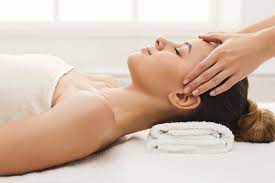Relieving Stress with Vagus Nerve Massage in 2025
vagus nerve massage, relieving stress, understanding vagus nerve, vagus nerve and stress, vagus nerve massage techniques, neck and throat Massage, abdominal massage, deep breathing and humming, auricular stimulation, benefits of vagus nerve massage, relaxation and calmness, improved digestion, enhanced Mood, better heart health
Introduction
1. In this article, we will explore the connection between vagus nerve massage and stress relief, and how targeted massage techniques can promote relaxation and restore balance to the body. In our fast-paced, modern lives, stress has become an all-too-common companion. The constant demands and pressures we face can take a toll on our physical and mental well-being. However, there are effective ways to manage and alleviate stress, and one such approach is through vagus nerve massage.
2. Understanding the Vagus Nerve

Before delving into vagus nerve massage, let’s briefly understand the vagus nerve itself. The vagus nerve is a significant component of the parasympathetic nervous system, responsible for calming the body and counteracting the stress response. It originates in the brainstem and branches out to various organs, including the heart, lungs, and digestive system. The vagus nerve plays a vital role in regulating heart rate, digestion, inflammation response, and overall relaxation.
3. The Vagus Nerve and Stress

When we experience stress, the sympathetic nervous system kicks into gear, triggering the well-known “fight-or-flight” response. This response prepares us to deal with perceived threats by increasing heart rate, raising blood pressure, and tensing muscles. However, chronic stress can lead to imbalances in the autonomic nervous system, leaving us in a constant state of tension.
The vagus nerve acts as a counterbalance to the sympathetic nervous system. It helps activate the parasympathetic response, promoting relaxation. By stimulating the vagus nerve, we can signal to our body and mind that it’s time to unwind, reduce stress levels, and restore equilibrium.
4. Vagus Nerve Massage Techniques
Vagus nerve massage involves gentle stimulation of specific areas that correspond to the path of the vagus nerve. By applying targeted pressure and soothing touch, we can activate the vagus nerve and induce a relaxation response. Here are a few techniques commonly used:

- Neck and Throat Massage

Neck and Throat Massage
The vagus nerve passes through the neck and throat area, making it an ideal region for massage. Begin by using your fingertips to apply gentle circular motions along the sides of the neck and throat. Gradually increase the pressure, focusing on areas where you feel tension. This technique can help release neck tension and stimulate the vagus nerve.
- Abdominal Massage
Another effective technique involves massaging the abdominal area, where the vagus nerve branches out to the digestive organs. Start by placing your palms flat on your abdomen and apply gentle, clockwise circular motions. As you massage, focus on deep, relaxed breathing, allowing the gentle pressure to activate the vagus nerve and promote relaxation.
- Deep Breathing and Humming

Deep Breathing and Humming 
Humming breathing
Deep breathing exercises combined with humming can provide a double benefit by engaging the diaphragm and stimulating the vagus nerve. Sit or lie in a comfortable position, take slow, deep breaths, and as you exhale, produce a soft humming sound. This vibration created by humming resonates with the vagus nerve and can enhance the relaxation response.
Auricular Stimulation https://amzn.to/3CYJHwi


Auricular Stimulation
The external ear contains specific points that connect to various parts of the body, including the vagus nerve. Gently massage the earlobe and the outer ear, paying attention to the areas that feel tender or tight. You can also use ear seeds or small magnets on these points to provide continuous stimulation and support stress relief.
5. Benefits of Vagus Nerve Massage
Vagus nerve massage offers numerous benefits beyond stress relief. Some of the key advantages include:
- Relaxation and Calmness
By stimulating the vagus nerve, massage techniques promote relaxation, reduce anxiety, and induce a sense of calmness. This can help counteract the physiological and psychological effects of chronic stress.
- Improved Digestion
The vagus nerve plays a crucial role in regulating digestion. By massaging the abdominal area and stimulating the vagus nerve, you can enhance digestive function, reduce bloating, and support overall gut health.
- Enhanced Mood
Vagus nerve stimulation through massage has been associated with improved mood and emotional well-being. It can help reduce symptoms of depression and anxiety, providing a natural and holistic approach to mental health.
- Better Heart Health
Massage techniques that activate the vagus nerve can help regulate heart rate and blood pressure, contributing to improved cardiovascular health. This can potentially reduce the risk of heart-related conditions.
Conclusion
Vagus nerve massage offers a simple yet powerful approach to relieving stress and promoting overall well-being. By incorporating targeted massage techniques into your self-care routine, you can activate the vagus nerve, engage the parasympathetic nervous system, and experience a profound sense of relaxation. Remember to approach vagus nerve massage with gentle, mindful touch, and be consistent in your practice to maximize the benefits. Take the time to nurture your nervous system and restore balance, allowing yourself to thrive in a world that often demands so much.
- Disclaimer: The contents of this article are intended to raise awareness about common health issues and should not be viewed as sound medical advice for your specific condition. You should always consult with a licensed medical practitioner before following any suggestions outlined in this article or adopting any treatment protocol based on the contents of this article.
Understanding Anger : A Comprehensive Guide in 2025
